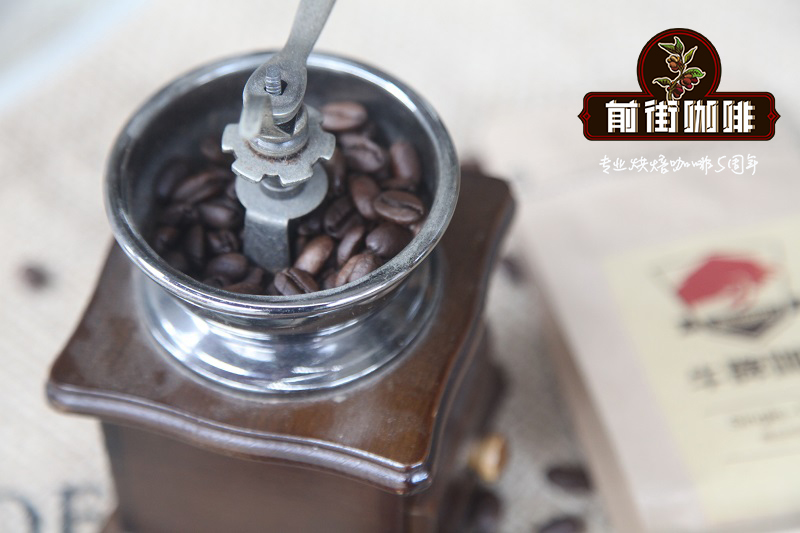Introduction to the characteristics of coffee in Matagalpa, Nicaragua _ where is the best coffee in Nicaragua

Professional coffee knowledge exchange more coffee bean information please follow the coffee workshop (Wechat official account cafe_style)
Nicaragua is located in the central part of Central America, bounded by Honduras in the north, Costa Rica in the south, the Caribbean Sea in the east and the Pacific Ocean in the west, with a total area of 130400 square kilometers.
Limoncillo-13-1 the central part of Nicaragua is a highland; the east is a coastal plain with many jungle swamps and low-lying terrain; the west is a coastal lowland with many volcanoes and lakes in the east.
The Nicaragua plain has a high temperature and rainy climate, and belongs to a tropical maritime climate; in the western coastal lowlands, the precipitation is obviously less than that in the east, and there are dry and wet seasons, so it belongs to the savanna climate; the annual average temperature in the central highlands is 18 ℃, and the annual precipitation is 1500Mel 2500mm, with the rainy season from 5m to December.
Nicaragua is one of the major coffee producing countries, producing high quality coffee. The quality of coffee produced by several coffee-producing countries in Central America, Guatemala, Costa Rica and Nicaragua is similar, mainly due to weather conditions, soil fertility, planting height and other conditions.
Nicaraguan coffee cultivation and production has a unique environment, all over the fertile volcanic ash soil, coupled with shade planting mode, established a good production quality, Nepalese coffee has a rich mellow and fragrant taste, moderate acidity and bitter taste balance is excellent, in the eyes of international coffee experts as top grade.
Nicaraguan coffee of high quality is in the forefront of coffee beans in the world and enjoys a good reputation. Its particles are moderate in size, mild in taste and very aromatic and mellow.
Coffee is a pillar industry in Nicaragua, producing nearly 100,000 tons of coffee beans every year. Many people who have tasted Nicaraguan coffee usually think that it is no different from Salvadoran coffee or Honduran coffee. It is full-bodied, smooth and delicate, with a slightly bitter finish, like a faint taste in a wine.
The best coffee is produced in Matagalpa. The coffee produced here is highly respected by coffee lovers all over the world and gradually valued by the boutique community. Abundant precipitation, suitable temperature, high altitude, fertile soil and unique planting ecology are the prerequisites for creating high-quality Nicaraguan coffee.
Matagalpa is the coffee producing area that produces the highest quality coffee in Nicaragua, and there is a heavyweight coffee estate worth introducing-the lemon tree (El Limoncillo). The estate is located in the plateau of Matagalpa at an altitude of 950murmur1300 meters above sea level, and there are towering coniferous forests around the coffee trees, providing shade for the growth of coffee trees. This allows coffee trees to be exposed to sunlight while protecting them from being burned by the scorching sun.
The suitable climate provides an excellent growth environment for the cultivation of coffee. The mineral-rich pozzolanic soil provides abundant nutrients for the cultivation of coffee trees. High-quality Nicaraguan coffee is also grown in the northern and central highlands of the country. The best coffee is produced in Matagalpa. The coffee produced here is highly respected by coffee lovers all over the world and gradually valued by the boutique community. Abundant precipitation, suitable temperature, high altitude, fertile soil and unique planting ecology are the prerequisites for creating Nicaraguan boutique coffee.
END
Important Notice :
前街咖啡 FrontStreet Coffee has moved to new addredd:
FrontStreet Coffee Address: 315,Donghua East Road,GuangZhou
Tel:020 38364473
- Prev

Introduction to the Manor of Santa Rita, Nicaragua _ introduction to the Origin of Java Coffee varieties
Professional coffee knowledge exchange more coffee bean information please follow the coffee workshop (Wechat official account cafe_style) Nicaragua RFA Santa Rita Javanica Nicaraguan Rainforest Union certified Santa Rita Manor Java flavor description: dry fragrance is a charming herb unique to Central America and Java with floral and lemon peel, fresh blueberries and peaches
- Next

Lim region of Ethiopia | what is the flavor of native species washed by limu Kossa Xhosa?
Professional coffee knowledge exchange more coffee bean information please follow the coffee workshop (Wechat official account cafe_style) Ethiopia Lim production area | limu Kossa Xhosa washing local native species flavor? Finding coffee on a farm is very rare in Ethiopia, but Gidey Berhe Retta is in Limu Kossa
Related
- Detailed explanation of Jadeite planting Land in Panamanian Jadeite Manor introduction to the grading system of Jadeite competitive bidding, Red bid, Green bid and Rose Summer
- Story of Coffee planting in Brenka region of Costa Rica Stonehenge Manor anaerobic heavy honey treatment of flavor mouth
- What's on the barrel of Blue Mountain Coffee beans?
- Can American coffee also pull flowers? How to use hot American style to pull out a good-looking pattern?
- Can you make a cold extract with coffee beans? What is the right proportion for cold-extracted coffee formula?
- Indonesian PWN Gold Mandrine Coffee Origin Features Flavor How to Chong? Mandolin coffee is American.
- A brief introduction to the flavor characteristics of Brazilian yellow bourbon coffee beans
- What is the effect of different water quality on the flavor of cold-extracted coffee? What kind of water is best for brewing coffee?
- Why do you think of Rose Summer whenever you mention Panamanian coffee?
- Introduction to the characteristics of authentic blue mountain coffee bean producing areas? What is the CIB Coffee Authority in Jamaica?

